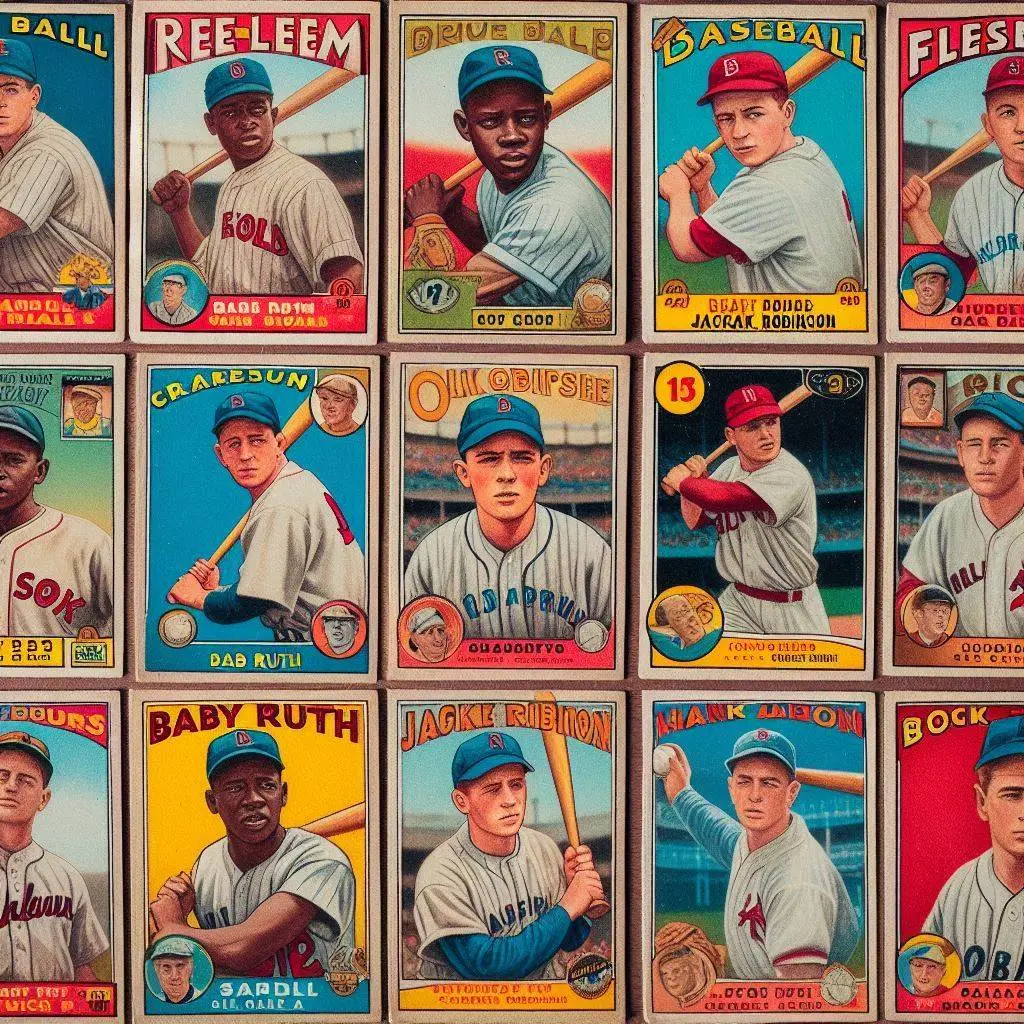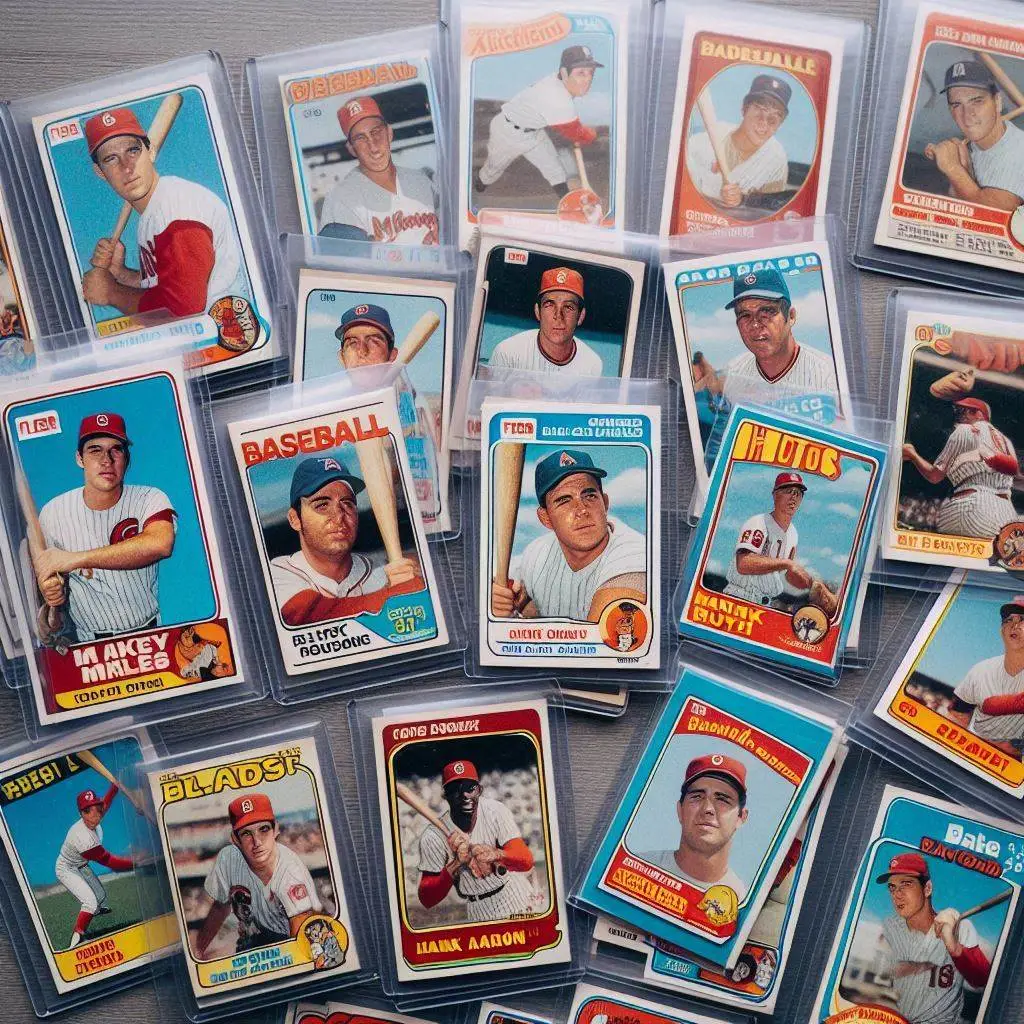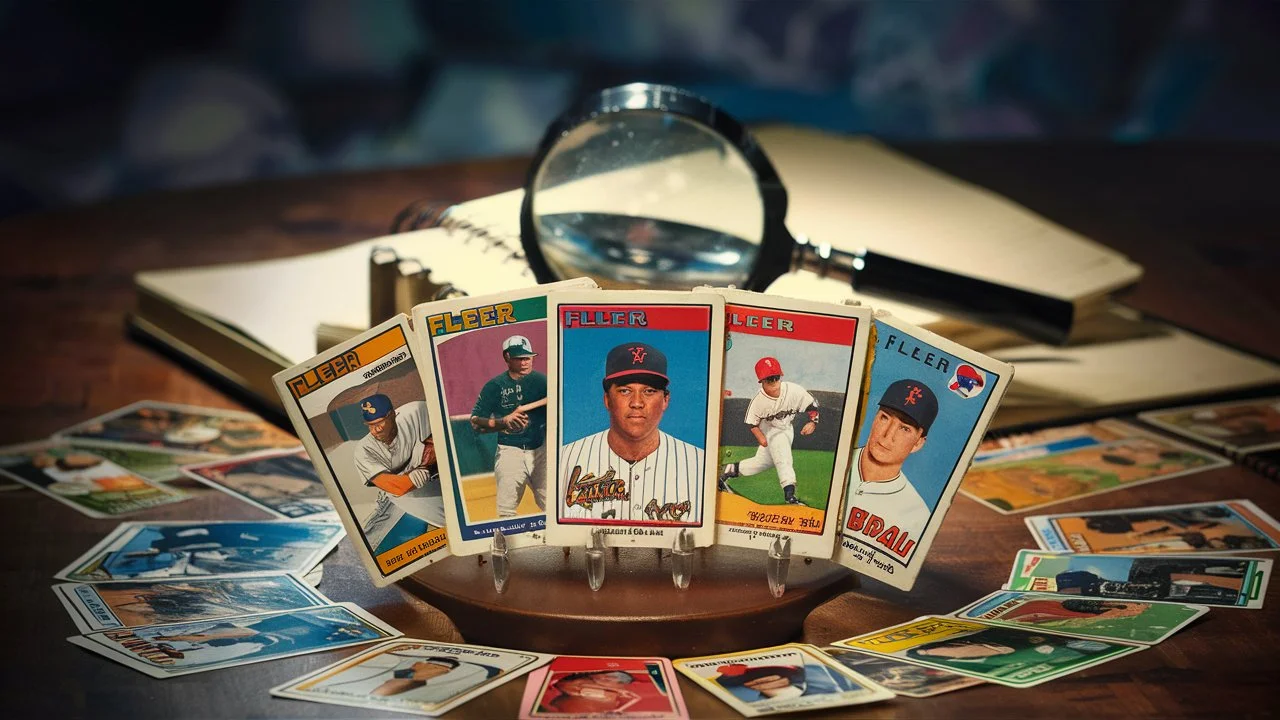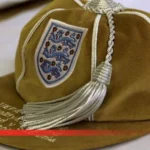Do you wonder if your Fleer baseball cards are worth anything? 🏆 You’re not alone! Fleer baseball cards have captured the hearts of collectors for decades. Understanding their value can be both exciting and rewarding.
Here’s why Fleer baseball cards are so special:
- Historical Significance: Fleer has a rich history in the trading card industry.
- Unique Collections: Fleer sets include iconic and rare cards that are sought after by collectors.
- Investment Potential: Many Fleer cards have appreciated in value over time, making them a potential investment opportunity.
In this article, we’ll uncover the true value of Fleer baseball cards. We’ll explore their history, understand what affects their value, and identify the most valuable cards. We’ll also give tips on buying, selling, and trading Fleer cards, and how to store and preserve them. Plus, we’ll connect you with the collector community and discuss the investment potential of these nostalgic treasures.
Get ready to dive into the fascinating world of Fleer baseball cards. Whether you’re a seasoned collector or just starting, this guide will help you discover the hidden gems in your collection. From identifying fake cards to understanding market trends, you’ll find everything you need to know right here. Let’s embark on this exciting journey to uncover the true worth of Fleer baseball cards! 🚀
The History of Fleer Baseball Cards

Fleer has a long and storied history in the world of baseball cards. Founded in 1885, the company initially produced gum and candy before venturing into the baseball card market. Let’s take a closer look at how Fleer made its mark on the industry.
Early Beginnings:
- 1885: Fleer was established, originally focusing on gum and candy products.
- 1923: The company released its first set of baseball cards, featuring players from the minor leagues.
- 1959: Fleer began producing cards featuring Major League Baseball (MLB) players, starting with a set dedicated to Ted Williams.
Key Milestones:
- 1963: Fleer issued a set of “Fleer Baseball Greats,” highlighting legendary players from the past.
- 1981: This year marked Fleer’s entry into the modern era of baseball cards, as they secured the rights to produce MLB cards, breaking the monopoly held by Topps.
- 1984: The release of the update set included the rookie card of Roger Clemens, one of the most sought-after cards from that era.
- 1989: Fleer’s most iconic set, featuring the famous Bill Ripken error card, was released. This set remains popular among collectors for its unique quirks and valuable cards.
Iconic Cards:
- 1984 Roger Clemens Rookie Card: This card is highly valued for its depiction of the legendary pitcher.
- 1986 Barry Bonds Rookie Card: A must-have for any serious collector, this card showcases one of baseball’s greatest players.
- 1989 Bill Ripken Error Card: Known for its unintentional obscenity, this card is famous and collectible due to its rarity and the story behind it.
Fleer’s journey through the baseball card market is a testament to its resilience and innovation. The company’s ability to produce cards that captivate collectors has cemented its place in the hobby’s history. From its early beginnings with minor league players to breaking into the MLB card market, Fleer has continually evolved to meet the demands of collectors.
As we delve deeper into the value of Fleer baseball cards, understanding their history helps us appreciate their significance. These cards are not just pieces of cardboard; they are snapshots of baseball history and a testament to the legacy of Fleer. 📸⚾
Understanding Card Value

Understanding what makes Fleer baseball cards valuable is essential for any collector. Several factors can influence the value of these cards, from their condition to their rarity. Let’s break down the key aspects that determine a card’s worth.
Factors Affecting Value:
- Card Condition: The state of a card is crucial. Cards in mint condition fetch higher prices. Grading services like PSA and Beckett evaluate cards and assign grades based on their condition.
- Rarity and Scarcity: Some cards are produced in limited quantities, making them rare and more valuable. Special editions, error cards, and short prints often fall into this category.
- Player Popularity and Performance: Cards featuring star players or rookies who go on to have outstanding careers are typically more valuable. Historical significance also plays a role; cards of legendary players are highly sought after.
- Historical Significance: Cards that mark significant moments in baseball history or have unique stories behind them can be particularly valuable.
Grading Systems:
- PSA (Professional Sports Authenticator): PSA is one of the most respected grading services. It uses a scale from 1 to 10, with 10 being gem mint.
- Beckett Grading Services (BGS): Beckett provides detailed grading with subgrades for centering, edges, corners, and surface, also on a scale from 1 to 10.
- SGC (Sportscard Guaranty): SGC is known for its stringent grading standards and black tuxedo-style holders, which appeal to many collectors.
Market Trends:
- Rising Interest: Over the past decade, interest in baseball cards has surged, partly due to nostalgia and the rise of the hobby during the pandemic.
- Auction Records: High-profile auctions often set new records, reflecting the increasing value of rare and iconic cards.
- Online Marketplaces: Platforms like eBay have made it easier for collectors to buy and sell cards, influencing market prices. Monitoring these trends can help collectors make informed decisions.
Understanding these factors helps collectors like you navigate the complex world of card valuation. By paying attention to card condition, rarity, player popularity, and market trends, you can better gauge the value of your Fleer baseball cards.
Card Condition Tips:
- Storage: Keep cards in protective sleeves and cases to prevent damage.
- Handling: Always handle cards with clean hands and avoid touching the surfaces.
- Environment: Store cards in a cool, dry place to avoid moisture damage.
Rarity Indicators:
- Print Runs: Research the print runs of specific sets to understand their rarity.
- Special Editions: Look for limited edition releases, autographed cards, and error cards.
- Rookie Cards: Cards featuring players in their rookie year are often more valuable, especially if the player goes on to have a notable career.
By mastering these aspects, you’ll be well on your way to uncovering the true value of your Fleer baseball cards. 📈💎
Most Valuable Fleer Baseball Cards

When it comes to Fleer baseball cards, certain cards stand out due to their high value. These cards are sought after by collectors and can fetch significant prices at auctions. Let’s explore the top 10 most valuable Fleer baseball cards and what makes them so special.
Top 10 Most Valuable Cards:
1984 Fleer Update Roger Clemens Rookie Card
- Why It’s Valuable: This card features Roger Clemens, one of the greatest pitchers in baseball history, during his rookie year.
- Recent Sales: High-grade copies of this card can sell for thousands of dollars.
1986 Fleer Update Barry Bonds Rookie Card
- Why It’s Valuable: Barry Bonds is a legendary player with numerous records, making his rookie card highly desirable.
- Recent Sales: Mint condition cards often exceed $1,000 in value.
1989 Fleer Bill Ripken Error Card
- Why It’s Valuable: Known for its infamous obscenity, this error card is a unique and collectible piece.
- Recent Sales: Depending on the version (corrected or uncorrected), prices can vary significantly.
1984 Fleer Update Kirby Puckett Rookie Card
- Why It’s Valuable: Kirby Puckett was a beloved player, and his rookie card is a favorite among collectors.
- Recent Sales: High-grade versions can reach several hundred dollars.
1984 Fleer Update Dwight Gooden Rookie Card
- Why It’s Valuable: Dwight Gooden had a stellar career, and his rookie card is highly sought after.
- Recent Sales: This card can fetch significant amounts, especially in top condition.
1982 Fleer Cal Ripken Jr. Rookie Card
- Why It’s Valuable: Cal Ripken Jr. is a Hall of Famer with a long and illustrious career, making his rookie card very valuable.
- Recent Sales: Prices can range from a few hundred to over a thousand dollars.
1989 Fleer Ken Griffey Jr. Rookie Card
- Why It’s Valuable: Ken Griffey Jr. is a legendary player, and his rookie card is one of the most popular from the 1989 Fleer set.
- Recent Sales: High-grade cards can sell for several hundred dollars.
1983 Fleer Tony Gwynn Rookie Card
- Why It’s Valuable: Tony Gwynn was one of the best hitters in baseball history, making his rookie card a prized possession.
- Recent Sales: This card can reach impressive prices, especially when graded highly.
1990 Fleer Update Frank Thomas Rookie Card
- Why It’s Valuable: Frank Thomas, known as “The Big Hurt,” had a remarkable career, and his rookie card is very collectible.
- Recent Sales: Prices for this card can vary, but mint condition copies are highly valued.
1987 Fleer Barry Bonds Rookie Card
- Why It’s Valuable: Another Barry Bonds rookie card, this one from the 1987 set, is also highly sought after.
- Recent Sales: This card can fetch high prices, particularly in pristine condition.
Why They’re Valuable:
- Rookie Status: Rookie cards are always in high demand, especially for players who have had exceptional careers.
- Error Cards: Unique error cards, like the Bill Ripken card, add a layer of intrigue and collectibility.
- Hall of Famers: Cards featuring Hall of Fame players are highly prized by collectors.
- Historical Significance: Cards that mark significant moments or feature legendary players are more valuable.
Recent Sales:
- Auction Examples: High-grade cards have set records at auctions, reflecting their increasing value.
- Online Marketplaces: Websites like eBay show the demand for these cards, with some selling for thousands of dollars.
Understanding which Fleer baseball cards are the most valuable helps collectors focus their efforts and potentially uncover hidden gems in their collections. Whether you’re buying, selling, or simply enjoying the hobby, knowing the standout cards can enhance your collecting experience. 💎🏆
Identifying Fake Fleer Cards
Ensuring the authenticity of your Fleer baseball cards is crucial for any collector. Counterfeit cards can significantly impact the value of your collection. Here’s how you can identify fake Fleer cards and protect your investment.
Common Scams:
- Reprints Sold as Originals: Some counterfeiters create reprints of popular cards and try to sell them as original, valuable cards.
- Altered Cards: Cards that have been altered to appear in better condition than they are, such as trimming edges or removing flaws.
- Forged Autographs: Fake autographs can be added to cards to increase their value fraudulently.
Tips for Authentication:
Compare with Known Originals: Compare your card to a verified original. Look for differences in color, print quality, and details.
Check the Printing: Authentic Fleer cards have specific printing techniques and patterns. Look for consistency in the ink and printing quality.
Examine the Card Stock: Genuine cards have a certain thickness and texture. Feel the card and compare it to others you know are authentic.
Look for Watermarks or Holograms: Some Fleer cards have security features like watermarks or holograms. Verify these features if applicable.
Use a Black Light: Some counterfeit cards lack the fluorescent properties of genuine cards. Shine a black light on the card to check for authenticity.
Resources for Verification:
- Professional Grading Services: Send your cards to services like PSA, Beckett, or SGC for professional authentication and grading.
- Collector Forums and Groups: Engage with other collectors online to share knowledge and get second opinions on suspicious cards.
- Authentication Guides: Use detailed guides and books that provide information on identifying authentic Fleer cards.
Identifying Common Fakes:
- 1989 Fleer Bill Ripken Error Card: This card is often counterfeited due to its popularity. Look closely at the obscenity on the bat handle and compare it to known originals.
- 1986 Fleer Update Barry Bonds Rookie Card: Check the card stock and printing quality carefully. Forgeries often fail to match the texture and print precision of the original.
- 1984 Fleer Update Roger Clemens Rookie Card: Pay attention to the card’s corners, edges, and color consistency, as these are common areas where fakes can be identified.
Avoiding Scams:
Buy from Reputable Sellers: Purchase cards from reputable dealers, auction houses, or well-reviewed online sellers.
Ask for Documentation: Request any documentation or proof of authenticity that the seller can provide.
Be Skeptical of Too-Good-To-Be-True Deals: If a deal seems too good to be true, it probably is. Be cautious and do your research.
Using Technology:
- Magnification Tools: Use a magnifying glass or jeweler’s loupe to examine fine details.
- UV Lights: Check for fluorescent properties that are hard to replicate.
- Digital Comparisons: Use high-resolution scans and digital tools to compare cards side by side.
Protecting your collection from counterfeit cards is essential. By learning to identify fake Fleer baseball cards and using professional resources, you can ensure your collection remains valuable and authentic. Collecting should be a joy, and part of that joy is knowing that every card in your collection is the real deal. 🕵️♂️🔍
Buying Fleer Baseball Cards
Buying Fleer baseball cards can be a rewarding experience, whether you’re looking to complete a collection, invest, or relive your favorite baseball moments. Here’s a comprehensive guide to help you make informed decisions when purchasing Fleer baseball cards.
Where to Buy Fleer Baseball Cards:
Online Marketplaces:
- eBay: One of the largest platforms for buying and selling cards. Look for sellers with high ratings and positive feedback.
- COMC (Check Out My Cards): A marketplace specializing in trading cards, offering detailed card images and reliable grading.
- Facebook Groups: Many collector groups offer a platform for buying, selling, and trading cards. Ensure you verify the seller’s reputation within the group.
Card Shows and Conventions:
- National Sports Collectors Convention: The largest card show in the US, featuring numerous dealers and rare cards.
- Local Card Shows: Smaller, local events can offer great finds and opportunities to negotiate prices.
Sports Card Shops:
- Brick-and-Mortar Stores: These shops often have knowledgeable staff who can help you find specific cards and provide advice on grading and condition.
- Online Stores: Some physical shops also operate online, expanding their inventory and reach.
Auctions:
- Heritage Auctions: A premier auction house specializing in high-value and rare sports cards.
- PWCC Marketplace: Known for its extensive auctions and vault services.
What to Look For When Buying:
Card Condition:
- Mint: Cards with no visible flaws, sharp corners, and clean surfaces.
- Near Mint: Minor imperfections but still in excellent condition.
- Good: Noticeable wear and tear, but the card is intact.
Grading:
- Professional Grading: Look for cards graded by PSA, Beckett, or SGC to ensure authenticity and condition.
- Self-Assessment: Learn how to assess cards yourself, focusing on corners, edges, centering, and surface.
Authenticity:
- Avoid Counterfeits: Refer to our previous section on identifying fake cards to ensure you’re buying genuine Fleer cards.
- Documentation: Request proof of authenticity if available, especially for high-value cards.
Rarity and Demand:
- Print Runs: Cards from limited print runs are usually more valuable.
- Popularity: Cards featuring popular or Hall of Fame players typically have higher demand.
Buying Tips:
Set a Budget: Determine how much you’re willing to spend and stick to it. This helps avoid overspending and ensures you get value for your money.
Research Prices: Check recent sales of similar cards to understand the market value and avoid overpaying.
Negotiate: Don’t be afraid to negotiate prices, especially at card shows or with individual sellers.
Inspect Before Buying: If possible, inspect the card in person or request high-resolution images to examine its condition.
Building Your Collection:
Focus on Sets: Collecting complete sets from specific years can be rewarding and often increases the collection’s overall value.
Player Collections: Focus on cards from your favorite players or those with significant career achievements.
Special Editions: Look for special editions, error cards, and limited prints that are more likely to appreciate in value.
Staying Informed:
Follow Market Trends: Keep up with market trends through forums, price guides, and collector communities.
Join Collector Groups: Participate in online forums and social media groups to stay connected with other collectors and get insights on the latest trends and deals.
Subscribe to Magazines: Publications like Beckett Baseball Card Monthly offer price guides and market analysis.
Buying Fleer baseball cards can be an exciting and enjoyable hobby. By knowing where to buy, what to look for, and how to build your collection, you can make smart purchasing decisions and enhance your collecting experience. Happy hunting! 🛒⚾
Selling Fleer Baseball Cards
Selling Fleer baseball cards can be just as rewarding as collecting them. Whether you’re looking to make a profit, downsize your collection, or trade for other cards, understanding how to sell your cards effectively is key. Here’s a guide to help you navigate the selling process.
Preparing to Sell:
Organize Your Collection:
- Sort by Value: Group cards by value, focusing on high-value, mid-value, and low-value cards.
- Identify Key Cards: Highlight cards that are likely to fetch higher prices, such as rookie cards, error cards, and cards of star players.
Assess Condition:
- Grading: Consider having your cards professionally graded by PSA, Beckett, or SGC to maximize their value.
- Self-Assessment: If professional grading is not feasible, learn to grade your cards yourself. Pay close attention to corners, edges, centering, and surface.
Research Market Value:
- Price Guides: Use price guides like Beckett or online resources to understand the current market value of your cards.
- Recent Sales: Check recent sales on platforms like eBay to get an idea of what similar cards are selling for.
Where to Sell:
Online Marketplaces:
- eBay: One of the most popular platforms for selling baseball cards. List your cards with clear images and detailed descriptions.
- COMC (Check Out My Cards): A specialized marketplace for trading cards that offers consignment services.
- Facebook Groups: Join collector groups where you can list your cards for sale. Ensure you follow group rules and verify the credibility of buyers.
Auction Houses:
- Heritage Auctions: Ideal for high-value and rare cards. They provide extensive marketing and reach a wide audience of serious collectors.
- PWCC Marketplace: Known for auctioning high-value cards and offering vault services for safe storage.
Card Shows and Conventions:
- Local Card Shows: Rent a booth or table to sell your cards directly to collectors.
- National Sports Collectors Convention: A major event where you can reach a large number of potential buyers.
Sports Card Shops:
- Local Shops: Many brick-and-mortar stores buy cards directly from collectors. They may offer consignment options as well.
- Online Stores: Some shops operate online and purchase cards through their websites.
Tips for Successful Selling:
Create Detailed Listings:
- High-Quality Images: Provide clear, high-resolution images of the front and back of the cards.
- Accurate Descriptions: Include details about the card’s condition, any unique features, and its grading if applicable.
Set Realistic Prices:
- Competitive Pricing: Price your cards competitively based on market research to attract buyers.
- Best Offer Option: Consider allowing buyers to make offers, giving you flexibility in negotiations.
Promote Your Listings:
- Social Media: Share your listings on social media platforms to reach a broader audience.
- Collector Forums: Post your cards in collector forums and engage with the community to generate interest.
Negotiate Wisely:
- Be Open to Offers: Be willing to negotiate with buyers, but know your bottom line.
- Bundle Deals: Offer discounts for buyers purchasing multiple cards to encourage larger sales.
Shipping and Handling:
Secure Packaging:
- Protective Sleeves and Cases: Use card sleeves and top loaders to protect cards during shipping.
- Bubble Mailers: Send cards in padded envelopes or boxes to prevent damage.
Insurance and Tracking:
- Insure High-Value Shipments: Purchase insurance for valuable cards to protect against loss or damage.
- Provide Tracking: Always include tracking information for your shipments to ensure delivery and build buyer trust.
Handling Returns:
- Clear Return Policy: Set a clear return policy and communicate it to buyers.
- Inspect Returns: Carefully inspect returned cards to ensure they are in the same condition as when sold.
Selling Fleer baseball cards successfully requires preparation, knowledge, and attention to detail. By following these guidelines, you can maximize your profits, protect your cards, and ensure a smooth transaction process. Happy selling! 💰📦
Collecting Strategies
Collecting Fleer baseball cards is more than just a hobby; it’s a passion that combines nostalgia, investment potential, and the thrill of the hunt. Developing a solid collecting strategy can help you build a valuable and enjoyable collection. Here are some strategies to consider.
Focus Areas:
Player Collections:
- Favorite Players: Collect cards of your favorite players, whether they’re current stars or legends of the game.
- Rookie Cards: Focus on rookie cards, which are often the most valuable and sought after by collectors.
Team Collections:
- Favorite Team: Collect cards featuring players from your favorite team, past and present.
- Historical Teams: Focus on teams with significant historical importance, such as championship teams.
Set Collections:
- Complete Sets: Aim to collect complete sets from specific years. This can be a rewarding challenge and often increases the collection’s overall value.
- Special Editions: Look for special edition sets, such as All-Star sets, limited print runs, or commemorative sets.
Error and Variation Cards:
- Error Cards: Collect cards with printing errors, which can be rare and valuable.
- Variation Cards: Look for cards with variations in design, print, or player information.
Hall of Famers:
- Collect Hall of Fame Players: Cards featuring Hall of Famers are always in demand and can be a cornerstone of any collection.
- Focus on Milestone Cards: Collect cards that mark significant milestones in a player’s career, such as their 500th home run or perfect game.
Building and Maintaining Your Collection:
Start Small:
- Begin with Affordable Cards: Start with cards that fit your budget and gradually work your way up to more valuable pieces.
- Learn the Market: Gain experience and knowledge about card values, conditions, and market trends.
Keep Cards in Good Condition:
- Use Protective Sleeves and Cases: Protect your cards with sleeves, top loaders, and binders to prevent damage.
- Store Properly: Keep your cards in a cool, dry place to avoid exposure to moisture and extreme temperatures.
Document Your Collection:
- Create an Inventory: Maintain an organized inventory of your cards, including details like player names, card conditions, and values.
- Use Software or Apps: Consider using collector software or apps to manage your inventory and track your collection’s value.
Stay Informed:
- Follow Market Trends: Keep up with market trends, price guides, and industry news to make informed decisions.
- Engage with the Community: Join collector forums, social media groups, and attend card shows to stay connected and learn from other collectors.
Investing in Fleer Baseball Cards:
Identify Investment Opportunities:
- Rookie Cards of Rising Stars: Invest in rookie cards of promising young players who may become future stars.
- Undervalued Cards: Look for cards that are currently undervalued but have the potential to increase in value.
Diversify Your Collection:
- Spread Your Investment: Diversify your collection to include a mix of high-value and affordable cards, different players, teams, and sets.
- Balance Nostalgia and Value: While it’s important to collect what you love, also consider the potential investment value of each card.
Monitor the Market:
- Track Prices: Regularly check auction sites, online marketplaces, and price guides to stay updated on card values.
- Sell Strategically: Know when to hold onto cards for long-term value and when to sell to maximize profit.
Trading and Networking:
Trade with Other Collectors:
- Engage in Trading: Trading cards with other collectors can help you acquire desired cards and build relationships within the community.
- Attend Trade Nights: Participate in trade nights at local card shops or card shows to find new opportunities.
Join Collector Groups:
- Online Communities: Join online forums and social media groups dedicated to baseball card collecting.
- Local Clubs: Connect with local collector clubs to meet fellow enthusiasts and exchange tips and advice.
Participate in Card Shows:
- Visit Card Shows: Attend card shows to buy, sell, trade, and learn from other collectors.
- Network: Build a network of trusted dealers and collectors to help you find rare cards and stay informed about market trends.
Collecting Fleer baseball cards can be a fulfilling and potentially profitable hobby. By developing a clear strategy, protecting your collection, staying informed, and engaging with the community, you can enjoy the thrill of collecting while building a valuable and cherished collection. Happy collecting! 📇⚾
Maintaining Your Collection
Maintaining your Fleer baseball card collection is essential for preserving its value and ensuring its longevity. Proper care and organization can protect your cards from damage and keep your collection in top condition. Here are some tips and best practices for maintaining your collection.
Proper Storage:
Protective Sleeves and Cases:
- Card Sleeves: Use penny sleeves to protect individual cards from scratches and fingerprints.
- Top Loaders: Place cards in top loaders for added protection, especially for high-value cards.
- Magnetic Holders: Use magnetic holders for displaying your most prized cards while keeping them safe.
Storage Binders and Boxes:
- Binders: Use binders with plastic sleeve pages to store and display cards. Ensure the pages are acid-free to prevent damage.
- Card Boxes: Store cards in dedicated card storage boxes. Choose boxes that are sturdy and designed to hold cards securely.
Climate Control:
- Cool, Dry Environment: Keep your collection in a cool, dry place. Avoid areas with high humidity or temperature fluctuations, which can cause warping or mildew.
- Avoid Sunlight: Store cards away from direct sunlight to prevent fading and discoloration.
Handling and Cleaning:
Clean Hands:
- Wash Hands Before Handling: Always wash your hands before handling cards to avoid transferring oils and dirt.
- Use Gloves: For high-value cards, consider wearing cotton gloves to minimize contact.
Proper Handling:
- Hold by the Edges: Handle cards by the edges to avoid damaging the surface.
- Avoid Bending: Be gentle when inserting or removing cards from sleeves or holders to prevent bending or creasing.
Cleaning Cards:
- Dusting: Use a soft, dry cloth to gently dust off cards. Avoid using any cleaning agents, as they can damage the cards.
- Compressed Air: Use a can of compressed air to blow off any loose dust or particles.
Organization:
Categorize Your Collection:
- Sort by Player, Team, or Set: Organize your cards by player, team, year, or set for easy access and reference.
- Label Sections: Use labels to mark different sections of your collection for quick identification.
Inventory Management:
- Create an Inventory List: Keep a detailed inventory of your collection, including card details and conditions.
- Use Software or Apps: Utilize collector software or apps to manage your inventory and track the value of your collection.
Regular Reviews:
- Inspect Periodically: Regularly inspect your cards for any signs of damage or deterioration.
- Update Inventory: Update your inventory list as you acquire new cards or sell existing ones.
Insurance and Security:
Insurance Coverage:
- Insure Your Collection: Consider getting insurance coverage for your collection, especially if it includes high-value cards.
- Document Value: Keep records of card values, receipts, and any appraisals to facilitate insurance claims.
Security Measures:
- Lockable Storage: Store high-value cards in a lockable cabinet or safe to protect them from theft.
- Alarm Systems: Use home security systems to safeguard your collection.
Displaying Your Collection:
Display Cases:
- Glass Cases: Use glass display cases to showcase your most prized cards while protecting them from dust and handling.
- Wall Displays: Consider wall-mounted display frames that hold multiple cards in a protective case.
Rotating Displays:
- Change Periodically: Rotate the cards you display to give different cards exposure and prDemographic sevent prolonged light exposure to any single card.
- Themed Displays: Create themed displays based on players, teams, or sets to add variety and interest.
Engaging with the Community:
Join Collector Groups:
- Online Forums: Participate in online forums and social media groups to share your collection and gain insights from other collectors.
- Local Clubs: Join local collector clubs to connect with fellow enthusiasts and exchange tips and advice.
Attend Card Shows:
- Visit Shows Regularly: Attend card shows to buy, sell, trade, and learn from other collectors.
- Network: Build a network of trusted dealers and collectors to help you find rare cards and stay informed about market trends.
Maintaining your Fleer baseball card collection requires attention to detail and a commitment to proper care. By following these guidelines, you can ensure that your collection remains in excellent condition and continues to bring you joy and value for years to come. 🛠️📦
Future of Fleer Baseball Cards
The future of Fleer baseball cards is an exciting topic, as it blends the nostalgia of the past with modern trends and technological advancements. As collectors and investors look ahead, several factors will influence the value and popularity of Fleer baseball cards. Let’s explore these aspects and what they mean for the future.
Technological Advances in Collecting:
Digital Collectibles:
- NFTs (Non-Fungible Tokens): Digital collectibles, especially NFTs, have gained popularity. Companies like Topps and Panini have already entered this space, and Fleer might follow. NFTs offer unique ownership verification, adding a modern twist to traditional card collecting.
- Augmented Reality (AR): AR can enhance the collecting experience by allowing collectors to interact with their cards in new ways. Imagine viewing a card’s stats and history in 3D or experiencing a holographic version of the player.
Online Marketplaces:
- E-Commerce Growth: The rise of online marketplaces like eBay, COMC, and others has made buying and selling cards more accessible. Fleer cards will benefit from these platforms, reaching a global audience.
- Blockchain Verification: Blockchain technology can provide secure verification of card authenticity and provenance, reducing the risk of counterfeits and increasing buyer confidence.
Evolving Collector :
New Generations of Collectors:
- Youth Engagement: Engaging younger generations through digital platforms and social media will be crucial. Interactive apps, online communities, and engaging content can attract new collectors to Fleer baseball cards.
- Nostalgia Marketing: Targeting older collectors with nostalgic marketing strategies can reignite interest in Fleer cards. Limited edition reprints and anniversary sets can appeal to this demographic.
Diverse Collectors:
- Inclusivity in Collecting: The collector base is becoming more diverse, with increasing participation from women and international collectors. Fleer can expand its appeal by highlighting diverse players and creating special edition cards.
Market Trends and Value Projections:
Investment Potential:
- Rising Values: As sports card collecting gains popularity, the value of Fleer baseball cards is likely to rise, especially for rare and graded cards. Investors see cards as alternative assets, and high-profile sales can drive market interest.
- Economic Factors: Economic conditions and market trends will influence card values. In times of economic uncertainty, tangible assets like baseball cards can become attractive investment options.
Rarity and Scarcity:
- Limited Editions: Limited edition and low-print run cards will continue to be highly sought after. Fleer could capitalize on this by releasing special sets with unique features.
- Graded Cards: The demand for professionally graded cards is expected to grow. Grading adds a layer of authenticity and helps preserve card condition, making them more valuable to collectors and investors.
Cultural Impact and Media:
Media Coverage:
- Sports Media: Increased media coverage of sports card collecting, including Fleer cards, can boost their popularity. Documentaries, TV shows, and online content that highlight the hobby can attract new collectors.
- Celebrity Influence: Endorsements and interest from celebrities and athletes can drive market interest. When high-profile figures invest in or promote Fleer cards, it can lead to a surge in popularity.
Social Media and Influencers:
- Influencer Marketing: Social media influencers and content creators who focus on sports cards can significantly impact Fleer card sales. Collaborations with popular influencers can introduce Fleer cards to new audiences.
- Community Engagement: Building strong online communities where collectors can share their collections, trade, and discuss Fleer cards can foster loyalty and interest.
Company Innovations and Strategies:
Product Innovation:
- New Card Designs: Fleer can innovate with new card designs, incorporating modern aesthetics while retaining classic elements. Special features like holograms, autographs, and memorabilia pieces can enhance appeal.
- Cross-Promotions: Collaborations with other brands, sports, or entertainment franchises can create unique, collectible products that attract a wider audience.
Sustainability:
- Eco-Friendly Practices: Adopting eco-friendly manufacturing processes and materials can appeal to environmentally conscious collectors. Sustainable packaging and production can set Fleer apart in the market.
Collector Engagement:
- Interactive Experiences: Hosting virtual events, card breaks, and Q&A sessions with athletes can engage collectors. These experiences can create a sense of community and excitement around Fleer cards.
- Customer Feedback: Listening to collector feedback and continuously improving products based on their preferences can ensure Fleer’s relevance and popularity.
The future of Fleer baseball cards looks promising, with technological advancements, evolving collector demographics, and market trends shaping their trajectory. By embracing innovation, engaging with new and diverse collectors, and leveraging media and cultural trends, Fleer can continue to thrive in the ever-changing world of sports card collecting. 🌟⚾
Conclusion
Fleer baseball cards hold a special place in the hearts of collectors and investors alike. Their rich history, iconic designs, and potential for value growth make them a fascinating and rewarding hobby. By understanding the factors that affect their value, employing effective collecting and selling strategies, and staying informed about market trends, you can make the most of your Fleer baseball card collection. Whether you’re a seasoned collector or a newcomer to the hobby, Fleer cards offer a unique and enjoyable way to connect with the world of baseball. Happy collecting! 📇✨

James Wilson combines his extensive knowledge and passion for sports to deliver top-notch content on SpoortsUp.com. His analytical approach and engaging style provide readers with a comprehensive understanding of the latest sports trends and developments. James’s articles are a perfect mix of information and entertainment.











